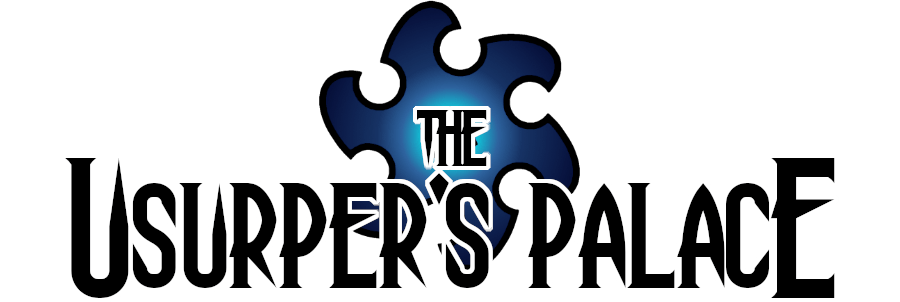The Masqued shed their old identities to become anyone; known mostly for masks they wear that distinguish them from normal partygoers on the Palace Boats. The Faceless have masks of wood, bone, and dirt, or create faces that look like animals just because they know it is hard, otherwise, to tell where to look when you talk to them. Some take on forms designed to express an identity that demonstrates their skill, their aesthetic sense. But then there are those, in these same magics, who have their identities shriven from them – people who need magical aid to restore themselves to being a person again, people who somehow are there, but not, manifested to the world but done so without an identity. It is a strange thing to have every name, and stranger still to have none.
Warning: Wizards employees, this post contains unsolicited designs of custom magic cards.
The theme of August was tricks. Tricks is a pretty broad group of things you can represent in the game, of course; a bunch of the cards were tricky by involving manifests (which let you do tricky things). Some were tricky because they invoked specific classic magic tricks. Some are tricky because they have changeling and enable a whole lot of different ideas in a little way. And some are tricks because the spell is something other than what it looks like.
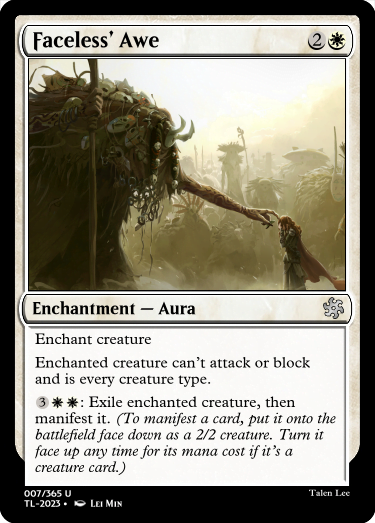

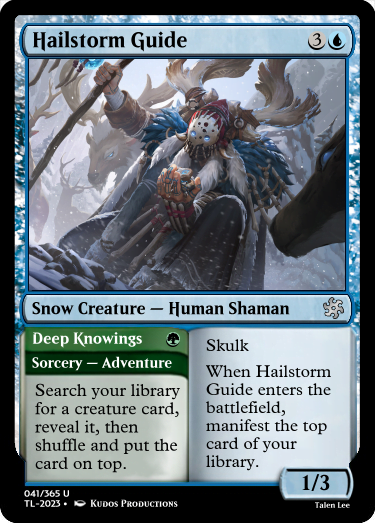
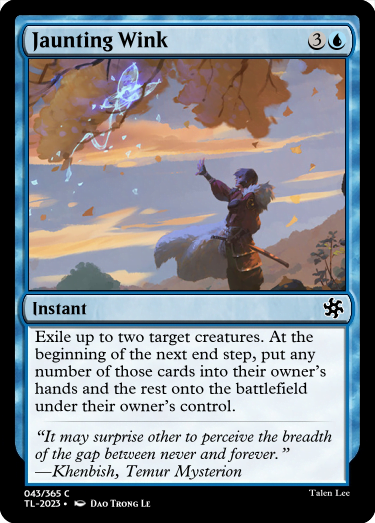
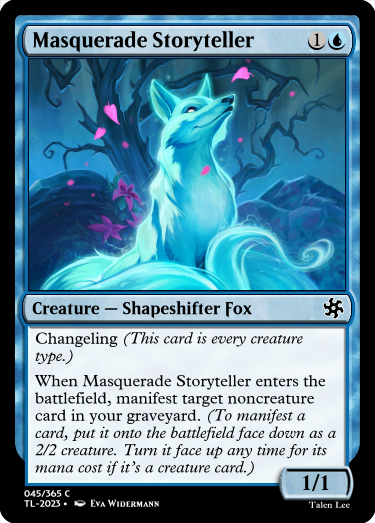
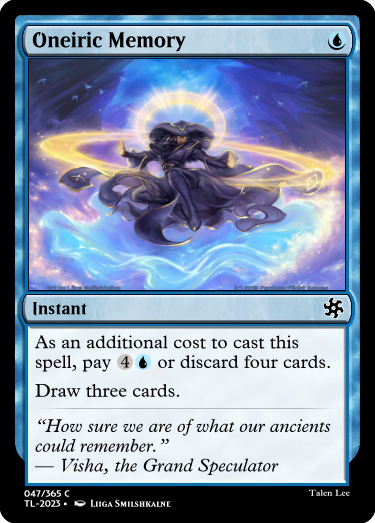
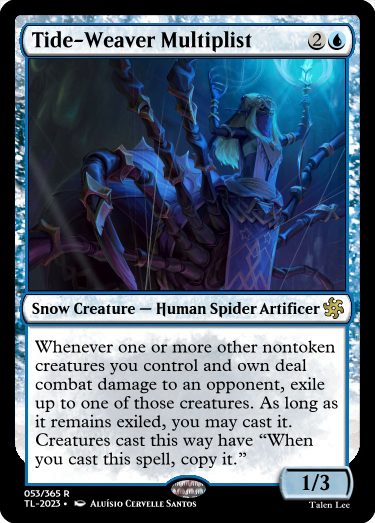
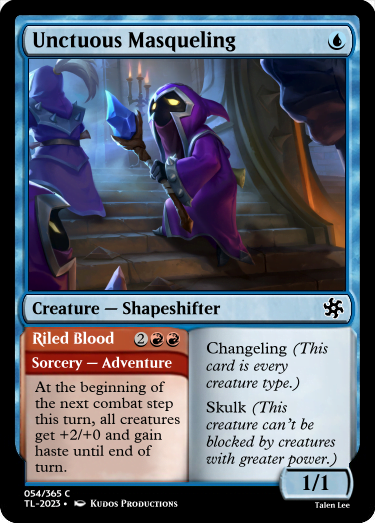
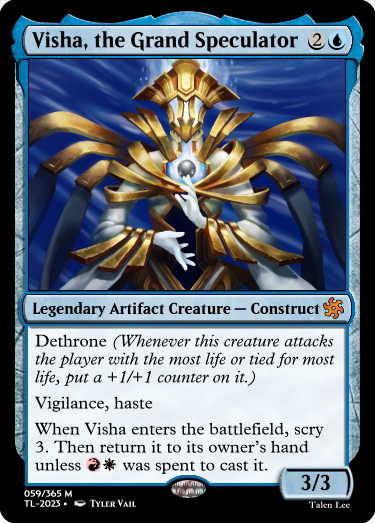
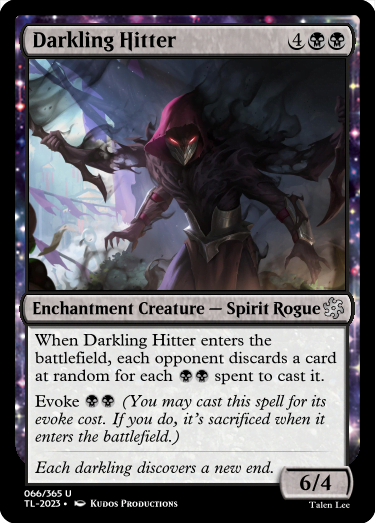
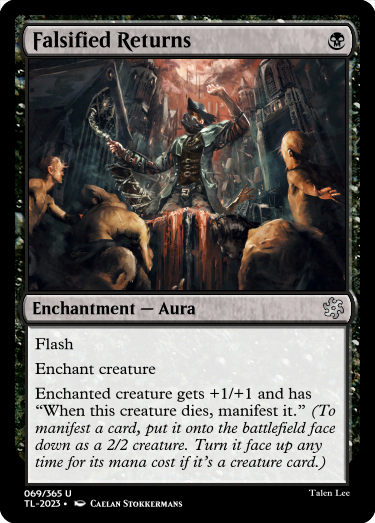
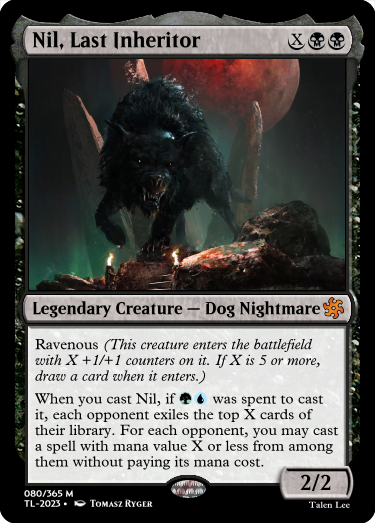
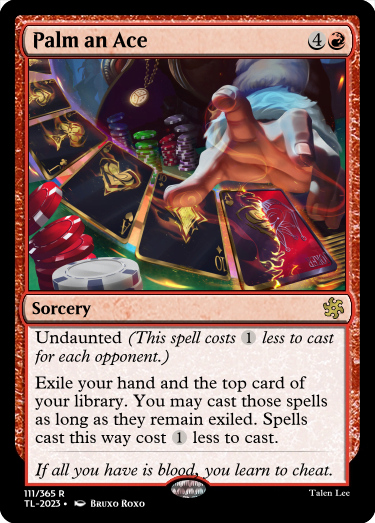
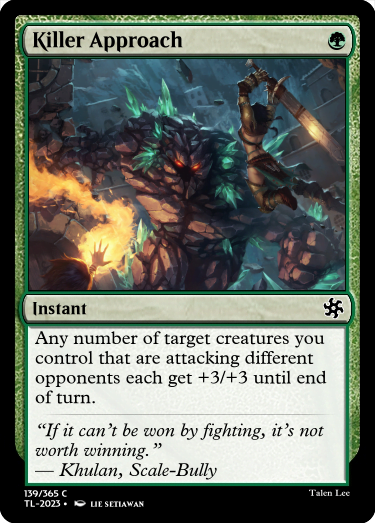
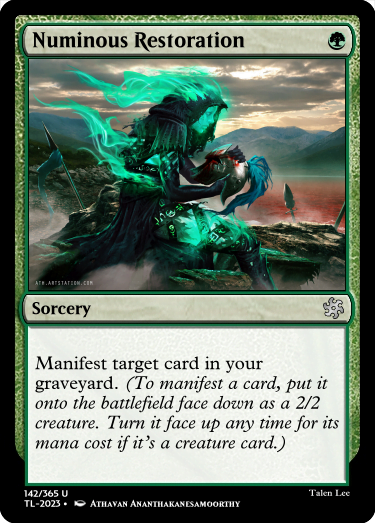
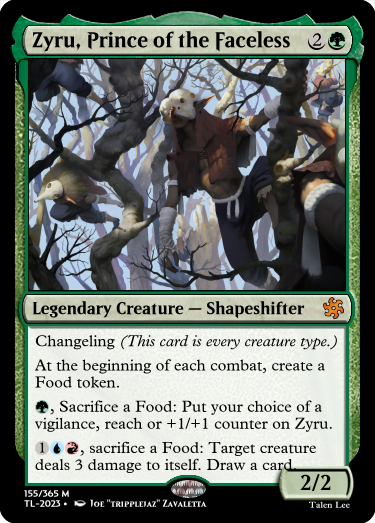
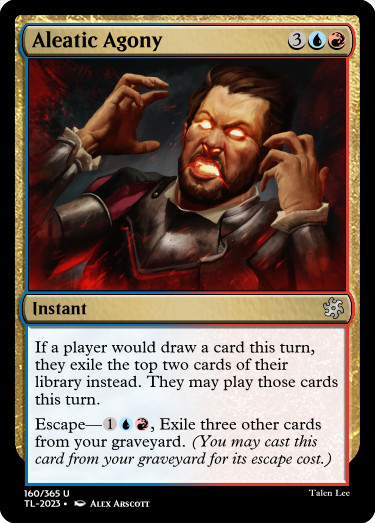
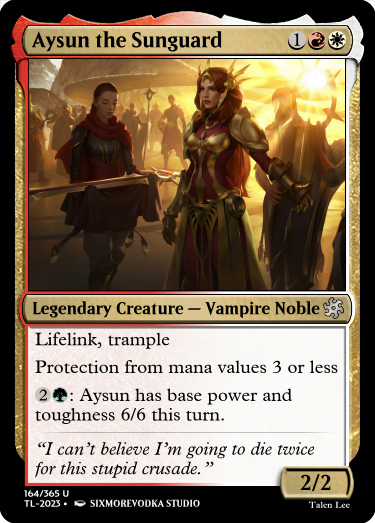
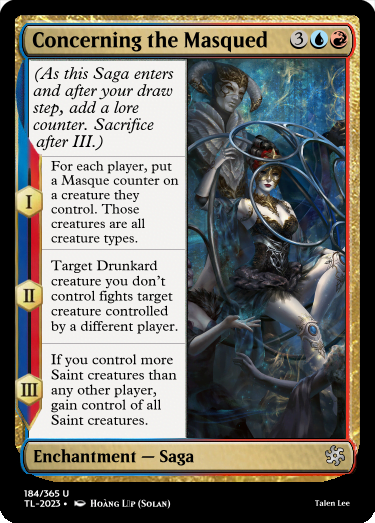
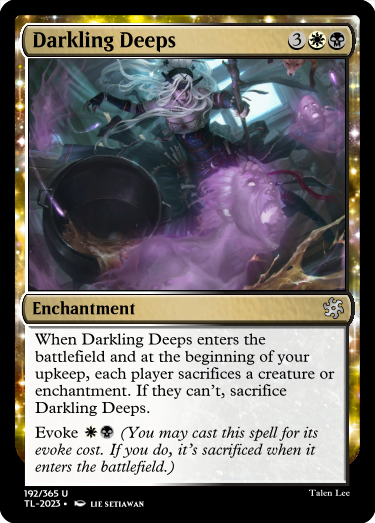
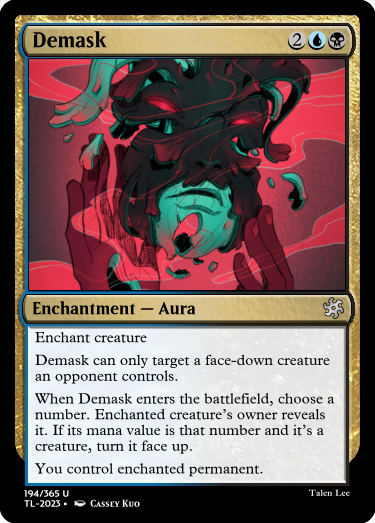
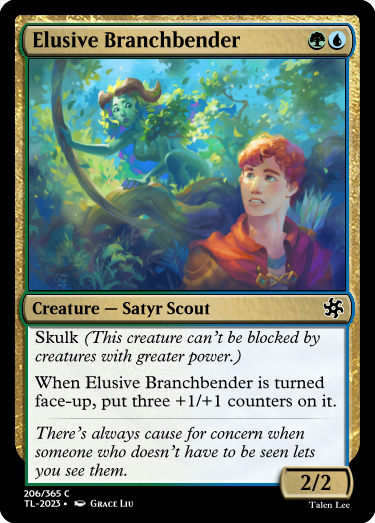
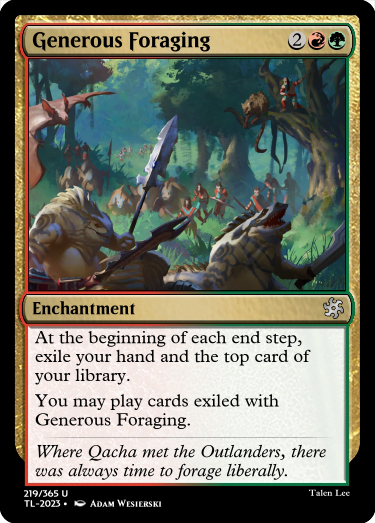
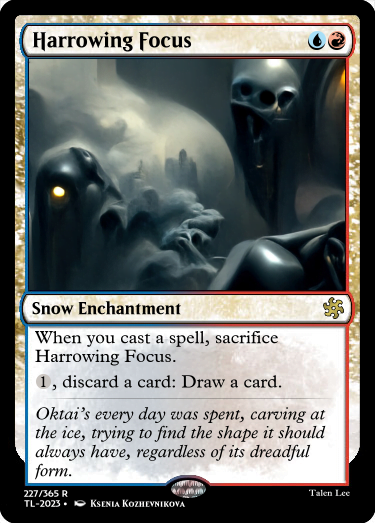
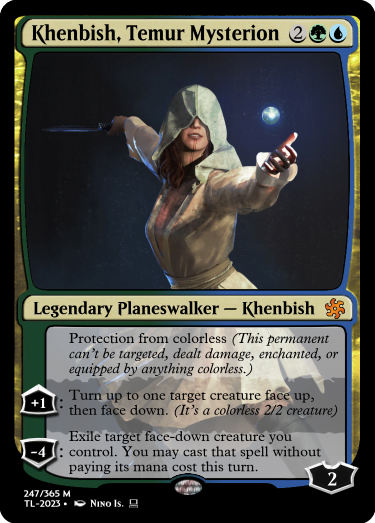
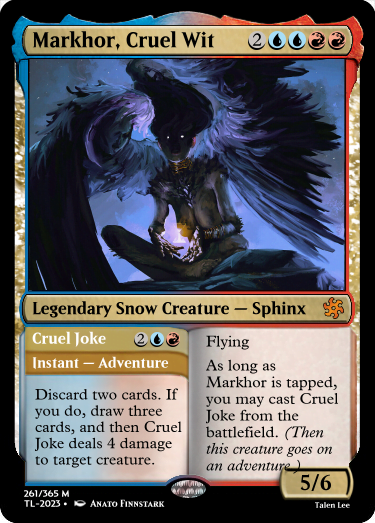
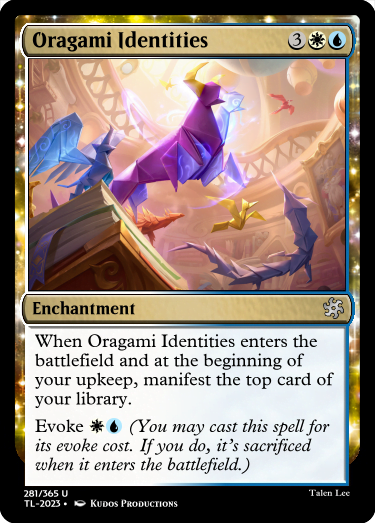
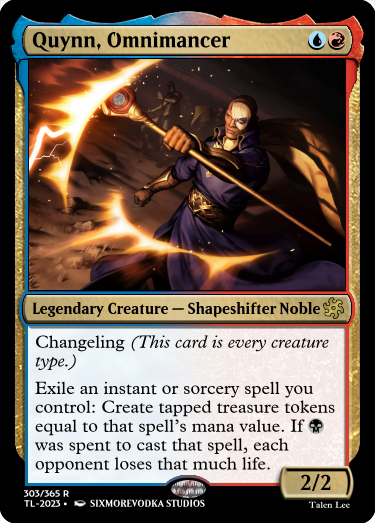
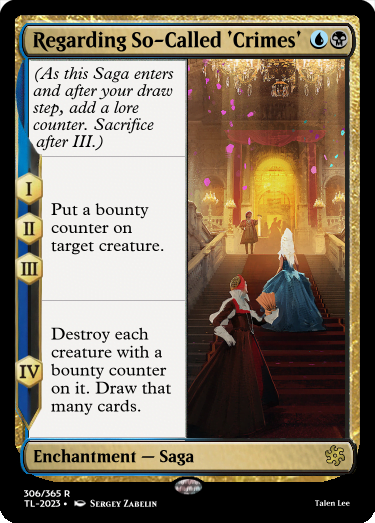
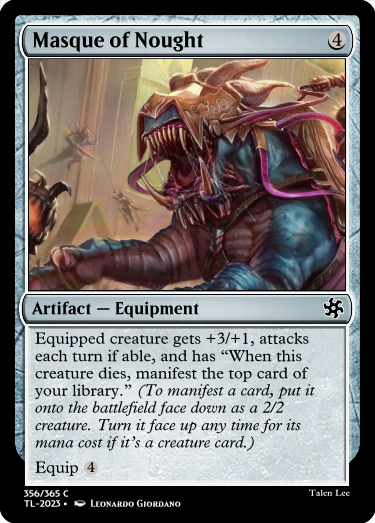
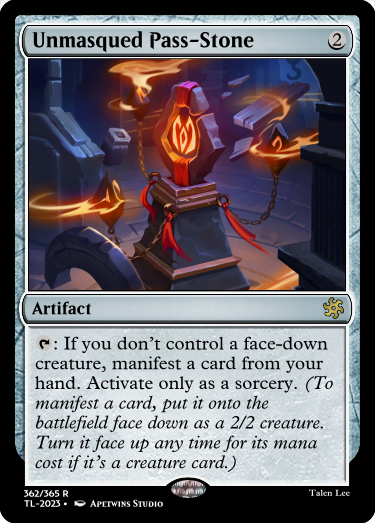


Looking at these cards I’ve made I find myself kind of struggling to express how proud I am of what they represent in my head, but also, so afraid that there’s no clear vision for you, an outsider, of how well they work. Does this convey the right flavour? Am I overdoing this? Is it obvious what this is based on name and mechanics? Ah well, we’ll see.
In this flavour space, I think of the manifests as either proto-faceless, things that have not yet worked out how to have a identity, or failed Masqued, things that gave up their identity but weren’t strong enough to handle what happened. Again, like Changeling, this is two different ways of examining the same mechanic.
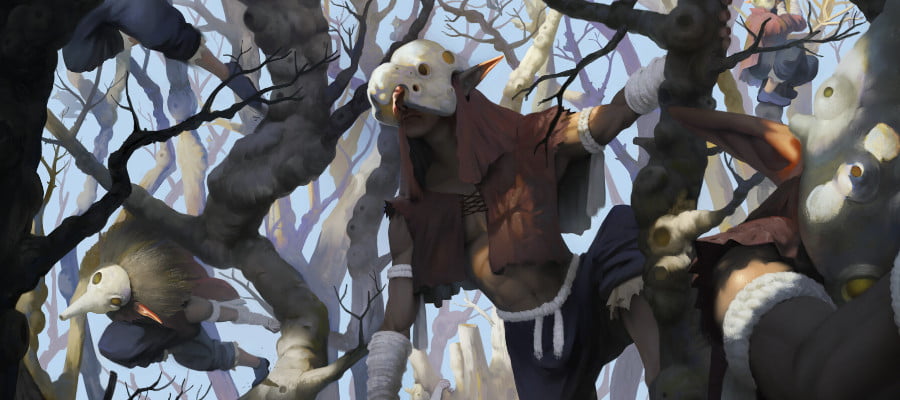
Quynn is the entrenched leader of the Masqued and possibly their first leader. A dedicated faceless manipulator, Quynn has spent so long orchestrating plans across identities amongst all the different factions of the Palace boats that Quynn has long since lost track of who is or isn’t on whose side, and that anything that renders these factions at peace with one another is not to be trusted.
Markhor is a sphinx living on the ice palace. They are an absolute pain in the ass; thery genuinely think the best way to convey information is to make it hard to understand because then you value it more when you solved it. Markhor is sure they are the smartest person in the room. They are possibly right. It doesn’t matter, they are just also very annoying.
Khenbish is a Temur planeswalker, who is stuck in the swirld of Ullaine’s reckless love. They believe in mysteries for their own sake, and exchange names for ideas. They are largely not that interested in what’s going on in this world, but it just so happens their home world’s morph magic and these wandering manifests are similar enough.
Aysun is a vampire lord meant to patrol the territory of the Outlands docks, there to keep the Barrens Scourged. She doesn’t want to, and thinks that’s stupid, and she’s not sure why. It’s probably because the assassination attempt she survived was done with a chunk of the Horned King’s horn, and now she has an ever-growing connection to the violent, primal part of nature that wants to feed. She’s disdainful of the Palace boats, and she has no idea how her loyalties will fall in the coming days.
Zyru is the prince of the Faceless. He’s not in charge of them – he’s just one of them so possessed of style and flair (and with such a pattern of behaviour) that Faceless happily regard him as their prince. Zyru is known for appearing in places, usually feasts and parties, and then rumbling someone who thought they could handle what the faerie-boy was about to deal out. Zyru’s technically got a side in this war, but most of all, he’s here to have fun.
Nil is the third of the Ravenous Hounds. The Hounds are meant to represent forces of nature trying to make death mean something – consuming the dead and cleaning up the work of planeswalkers. While Ole Doorscar attacks your life, and Psoglav feasts on bodies, it’s Nil who eats the soul, ripping away what you thought made you who you are.
And then finally, there’s Visha. Visha is a strange construct that lives at the Palace of the Dead. Periodically, Visha emerges, issues a proclamation and returns inside. Nobody understands what Visha is doing this for or why, but it’s now much more worrying when Visha appears and doesn’t go back inside, instead throwing some enormous porcelain hands.
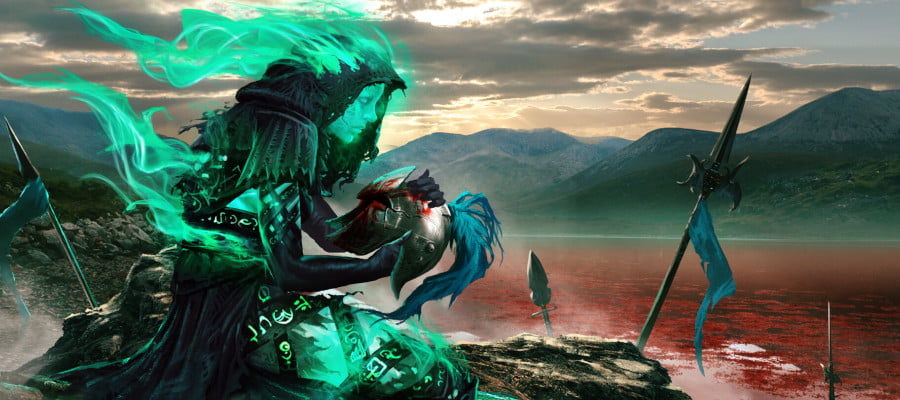
I feel like I might spend more time than usual on single, specific card narratives this time, just because so many of these cards stand out in my mind. I can see how in the end of the design, a bunch of these cards’ relationship to tricks may be a bit obscure – like a Killer Approach is a fairly generic term for initiating a good magic trick. Still, there are some I think of as real treats!
Demask deserves special mention, as it is pushing the absolute limits of card space, in my mind. It was a sorcery originally, but the wording got larger and larger, until I opted for an aura (which also gives some counterplay). I had to get the wording base off a card called Dream Leash from Ravnica, which has a really odd wording because of templating changes since its original appearance.
Inviting Guest may hold a record for the most space on a card saved by avoiding reminder text. If it was a real card, it would also be the only card (that I could find) that has the word manifest on it without the reminder text for manifests (which makes sense; manifests are a complicated mechanic). In my mind, I think of the changeling as ‘Shion’ because the art reminds me of a friend’s OC (though the character is obviously a lot more flamboyant and rambunctuous than her.
There are two cards here that are secretly alchemy cards in disguise, or at least, that’s how they started. The Tide-Weaver multiplist is one, but the much cheekier one (in my opinion) is the Masque of Naught, which is meant to fulfill the role of the Juggernaut Peddler. It took a lot of wording iterations to pull that one down, including a bunch of very short names to try and save space.
The Usurper’s Palace (USP) is a collection of Custom Magic cards made with the general structure of a commander draft set. The cards are posted, one per day with different themes every month, to the Custom Magic subreddit, on my Mastodon and Cohost. Follow along for more!
